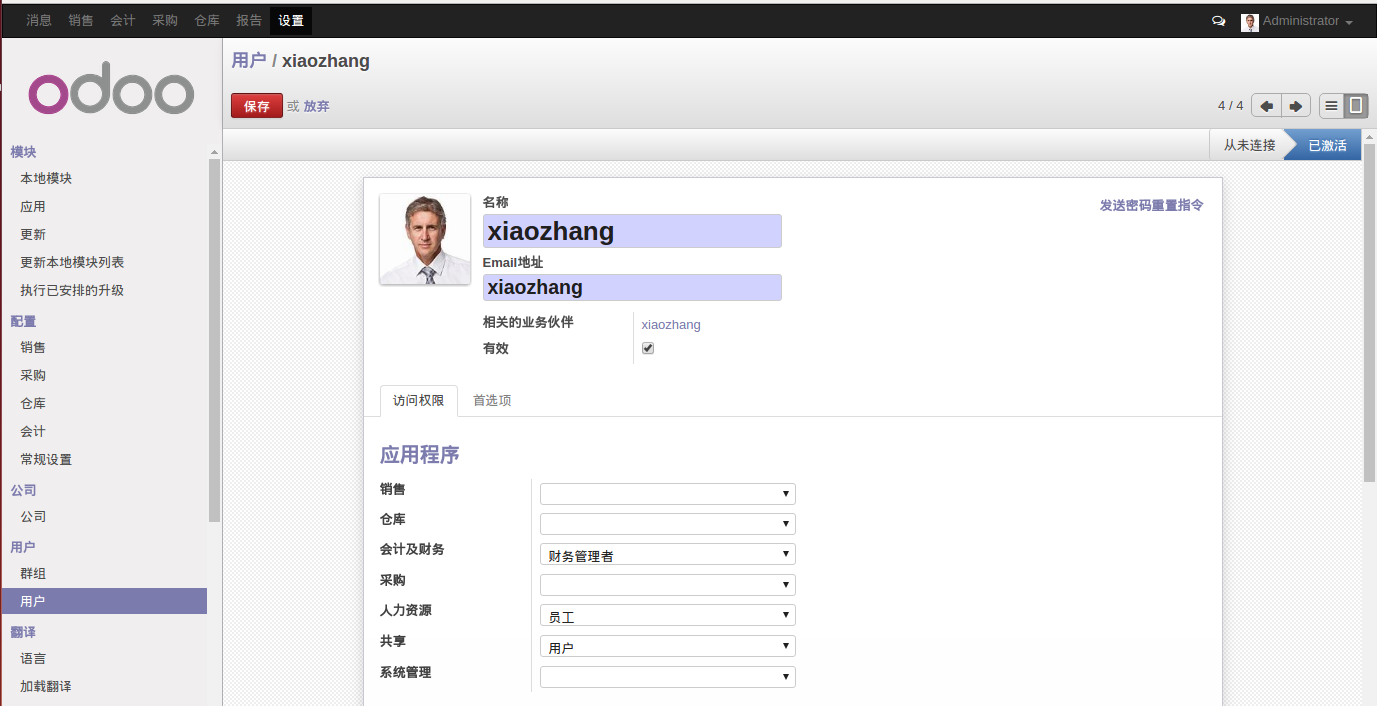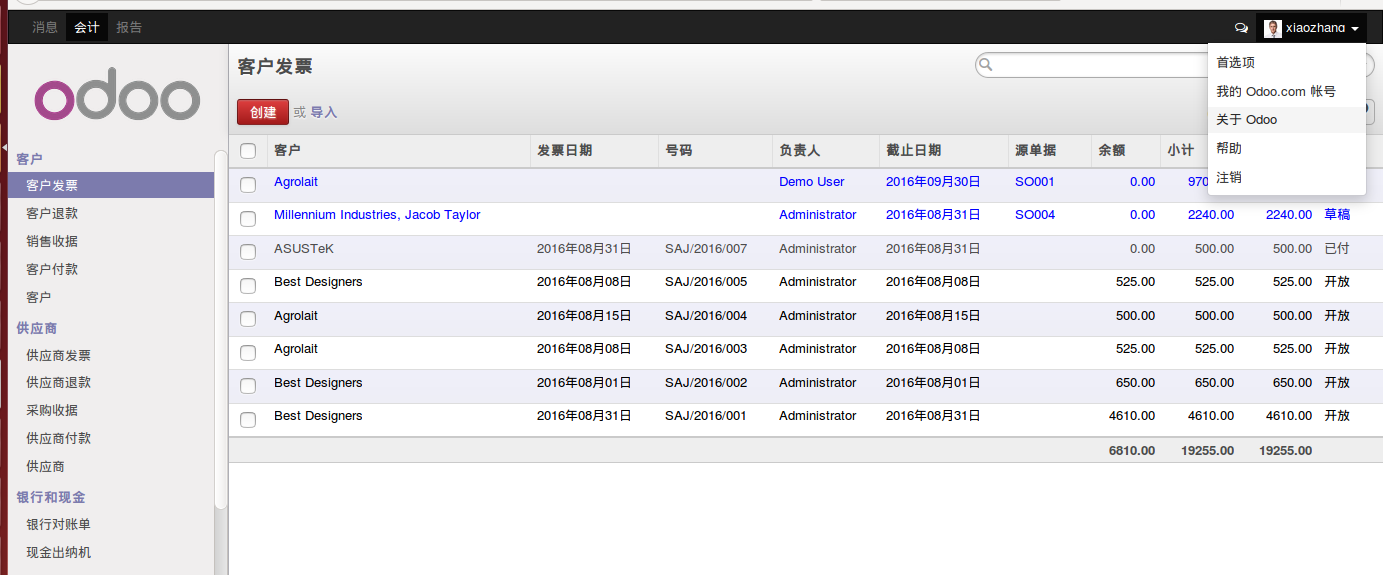Configuring Android Studio: IDE & VM Options, JDK, etc
https://developer.android.com/studio/workflow.html
You should not edit any files in the IDE installation directory. Instead, you can customize the attributes by creating your own .properties or .vmoptions files in the following directories. (This has been possible on some platforms before, but it required you to copy and change the entire contents of the files. With the latest changes these properties are now additive instead such that you can set just the attributes you care about, and the rest will use the defaults from the IDE installation).
Note: As of Android Studio 2.0, you can create/edit this file by accessing the "Edit Custom VM Options" file from the Help menu.

Note: The folder name depends on the version of Android Studio. The documentation below applies to the release version (1.1.x), but if you are on a different version of Android Studio, see the table below for the correct folder name for your version.
The following table shows the configuration folder name to use for each studio version. This folder is referenced below as {FOLDER_NAME}
Android Studio Version
Preferences Folder Name
1.0.x and 1.1.x AndroidStudio
1.2.0 EAP/Preview AndroidStudioPreview1.2
1.2.0, 1.2.1, 1.2.2 AndroidStudio1.2
1.3 Preview AndroidStudioPreview1.3
1.3.0, 1.3.1, 1.3.2 AndroidStudio1.3
1.4.0 Preview AndroidStudioPreview1.4
1.4.0 AndroidStudio1.4
1.5.0, 1.5.1 AndroidStudio1.5
2.0 Preview, Beta AndroidStudioPreview2.0
2.0 AndroidStudio2.0
2.1 Preview AndroidStudioPreview2.1
2.1 AndroidStudio2.1
2.2 Preview (Future) AndroidStudioPreview2.2
Windows:
%USERPROFILE%.{FOLDER_NAME}\studio.exe.vmoptions and/or %USERPROFILE%.{FOLDER_NAME}\studio64.exe.vmoptions
%USERPROFILE%.{FOLDER_NAME}\idea.properties
Mac:
~/Library/Preferences/{FOLDER_NAME}/studio.vmoptions
~/Library/Preferences/{FOLDER_NAME}/idea.properties
Linux:
~/.{FOLDER_NAME}/studio.vmoptions and/or ~/.{FOLDER_NAME}/studio64.vmoptions
~/.{FOLDER_NAME}/idea.properties
You can also place use environment variables to point to specific override files elsewhere:
STUDIO_VM_OPTIONS, which vmoptions file to use
STUDIO_PROPERTIES, which property file to use
STUDIO_JDK, which JDK to run studio with
Note that this last variable allows you to for example run Android Studio with Java 7 on OSX (which normally picks Java 6 from the version specified in Info.plist):
$ export STUDIO_JDK=/Library/Java/JavaVirtualMachines/jdk1.7.0_79.jdk
$ open /Applications/Android\ Studio.app
(For Mac in particular, see this document on the topic of JDK selection.)
Increasing IDE Memory
By default, the IDE is assigned a maximum of 750 MB. If you have a large project, or if you have a lot of RAM on your system, the IDE will run better if you increase the amount of memory it is allowed to use. To do that, create your own studio.vmoptions override (in the location explained above) and add a line like this:
-Xmx2048m
The full set of default JVM arguments are the following, in case you want to override any of the others (such as the start heap size of the MaxPermSize) :defaults in the IDE right
-Xms128m
-Xmx750m
-XX:MaxPermSize=350m
-XX:ReservedCodeCacheSize=96m
-XX:+UseCompressedOops
Setting a Property
If you want to override an IDE property, create a new idea.properties file in your local config directory, where you specify just the override properties. This file will be merged with the default properties in the IDE. See the below list for various properties you can change.
For example, Android Studio 2.0 ships with experimental improved bidirectional text support (issue 182739). To enable this support, create a file named idea.properties with just this content:
editor.new.rendering=true
On a Mac, for Android Studio 2.0 Preview, copy this file to ~/Library/Preferences/AndroidStudioPreview2.0/idea.properties.
On Windows, the path would be %USERPROFILE%.AndroidStudioPreview2.0\idea.properties
On Linux, the path would be ~/.AndroidStudioPreview2.0/idea.properties
Help, I Already Edited the IDE Installation Files
If you've already edited the files by hand, here are the files from 1.0 such that you can restore them:
idea.properties (Windows)
studio.exe.vmoptions (Windows)
studio64.exe.vmoptions (Windows)
studio.vmoptions (Mac, Linux)
idea.properties (Mac, Linux)
Android Studio is Ignoring My idea.vmoptions File
Around 1.0 we switched from storing VM options in a file called idea.vmoptions to one called studio.vmoptions, to avoid clashing with IntelliJ installations. If you had created a file named idea.vmoptions for Studio, it will be ignored now. Put your edits in studio.vmoptions instead.
Properties
Here are properties you can customize in your own idea.properties file:
#---------------------------------------------------------------------
# Uncomment this option if you want to customize path to user installed plugins folder. Make sure you're using forward slashes.
#---------------------------------------------------------------------
# idea.plugins.path=${idea.config.path}/plugins
#---------------------------------------------------------------------
# Maximum file size (kilobytes) IDE should provide code assistance for.
# The larger file is the slower its editor works and higher overall system memory requirements are
# if code assistance is enabled. Remove this property or set to very large number if you need
# code assistance for any files available regardless their size.
#---------------------------------------------------------------------
idea.max.intellisense.filesize=2500
#---------------------------------------------------------------------
# This option controls console cyclic buffer: keeps the console output size not higher than the specified buffer size (Kb).
# Older lines are deleted. In order to disable cycle buffer use idea.cycle.buffer.size=disabled
#---------------------------------------------------------------------
idea.cycle.buffer.size=1024
#---------------------------------------------------------------------
# Configure if a special launcher should be used when running processes from within IDE.
# Using Launcher enables "soft exit" and "thread dump" features
#---------------------------------------------------------------------
idea.no.launcher=false
#---------------------------------------------------------------------
# To avoid too long classpath
#---------------------------------------------------------------------
idea.dynamic.classpath=false
#---------------------------------------------------------------------
# There are two possible values of idea.popup.weight property: "heavy" and "medium".
# If you have WM configured as "Focus follows mouse with Auto Raise" then you have to
# set this property to "medium". It prevents problems with popup menus on some
# configurations.
#---------------------------------------------------------------------
idea.popup.weight=heavy
#---------------------------------------------------------------------
# Use default anti-aliasing in system, i.e. override value of "Settings|Editor|Appearance|Use anti-aliased font"
# option. May be useful when using Windows Remote Desktop Connection for instance.
#---------------------------------------------------------------------
idea.use.default.antialiasing.in.editor=false
#---------------------------------------------------------------------
# Disabling this property may lead to visual glitches like blinking and fail to repaint
# on certain display adapter cards.
#---------------------------------------------------------------------
sun.java2d.noddraw=true
#---------------------------------------------------------------------
# Removing this property may lead to editor performance degradation under Windows.
#---------------------------------------------------------------------
sun.java2d.d3d=false
#---------------------------------------------------------------------
# Workaround for slow scrolling in JDK6
#---------------------------------------------------------------------
swing.bufferPerWindow=false
#---------------------------------------------------------------------
# Removing this property may lead to editor performance degradation under X Window.
#---------------------------------------------------------------------
sun.java2d.pmoffscreen=false
#---------------------------------------------------------------------
# Workaround to avoid long hangs while accessing clipboard under Mac OS X.
#---------------------------------------------------------------------
#ide.mac.useNativeClipboard=True
#---------------------------------------------------------------------
# Maximum size (kilobytes) IDEA will load for showing past file contents -
# in Show Diff or when calculating Digest Diff
#---------------------------------------------------------------------
#idea.max.vcs.loaded.size.kb=20480
#---------------------------------------------------------------------
# High Density (aka Retina aka HiDPI) Display support:
#
# The two options below allow overriding the built-in HiDPI display detection
# algorithm to provide a custom system DPI.
# The options are not supported on Mac, as Retina support is built-in.
#
# hidpi.system.dpi.override=<dpi_value>
# where <dpi_value> can range from 96 (100% zoom), to 288 (300%) zoom.
#
# hidpi=true is a legacy option that is equivalent to setting
# hidpi.system.dpi.override=192 (200% zoom)
#---------------------------------------------------------------------
#hidpi.system.dpi.override=192
#hidpi=true
Subpages (1): Mac OSX JDK Selection
Č
ċ
idea.properties (7k)Tor Norbye, Dec 10, 2014, 11:26 AM
v.1ď
ċ
mac-idea.properties (1k)Tor Norbye, Dec 10, 2014, 11:26 AM
v.1ď
ċ
studio.exe.vmoptions (0k)Tor Norbye, Dec 10, 2014, 11:24 AM
v.1ď
ċ
studio.vmoptions (0k)Tor Norbye, Dec 10, 2014, 11:25 AM
v.1ď
ċ
studio64.exe.vmoptions (0k)Tor Norbye, Dec 10, 2014, 11:24 AM
v.1


